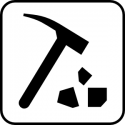Career Profile: Auto Body and Collision Damage Repairer

Cars, trucks, and other vehicles seem very strong, but they can easily be damaged or decay. Water from rain or snow rusts the metal, and accidents dent the bumpers or smash doors or other parts of the vehicle. If you become an auto body and collision damage repairer, you can help people drive vehicles that run well and look nice.
In areas with cold, snowy winters, vehicles often get rust spots because of the salt that people put on the roads to help melt the ice and keep vehicles from skidding. Eventually, the rust can destroy an entire vehicle.
Accidents also cause damage. When vehicles crash into each other, they often cause large dents or scratches that can later cause rust or even damage the engine or other inside parts. People in this field learn to use tools to repair dents or scratches, weld parts together, match colours and repaint the damaged sections.
Apprenticeship training programs are available in most parts of Canada for this trade. Auto body and collision damage repairer education includes courses in subjects like welding and refinishing. Normally, students should already be working in the field before they start the training program. With the time they spend in work and classes, the process usually takes about four years to complete. Getting a Red Seal designation is also necessary.
Wages for auto body and collision damage repairers begins at about $13 per hour and can rise to $31 with experience. Normally, people in this field work in repair shops, but they could also work in dealerships or even on their own. Sometimes, new cars might need some repairs if problems occur in the manufacturing process, and repairers can work in factories.
Some people in this field work with customers, but others might work mainly in the back with the vehicles. They might want to specialize in a certain type of repair, such as fixing bumpers, or a certain type of vehicle.
Any kind of work with cars and other vehicles can be very dirty, and people in this field also need to be able to deal with the smell of paint. Collision damage repair people should be fairly strong, although their tools can help with the heavy work.
Most people in this field tend to be quite young, but with enough help from others, people can continue to work in this field until retirement. They might work full time or part time. The tools for making repairs can be expensive and few people in this field can afford to work alone, but it is possible for people to have their own small repair shop.
Auto body and collision damage repairers need to keep up to date with tools and procedures and know the best ways of dealing with each type of vehicle. Reading skills are important. Also, having some math skills can help with estimating costs or calculating the supplies that you need, while courses on mechanics can also help.
Accidents on the road are common, and people in this field can normally do quite well. If the idea of working as an auto body and collision damage repairer appeals to you, why not start to prepare already?
Bibliography:
College of Trades. “Auto Body and Collision Damage Repairer.” https://www.collegeoftrades.ca/wp-content/uploads/TFS_AutoBody_Collision_Damage_Repairer-_Oct20151.pdf.
Centennial College. “Auto Body Repairer—Apprenticeship Training.” https://www.centennialcollege.ca/programs-courses/full-time/auto-body-repairer/.
Job Bank. “Motor Vehicle Body Repairer – Collision in Canada.” https://www.jobbank.gc.ca/marketreport/summary-occupation/7691/ca.
Payscale. “Average Auto Body Technician Hourly Pay in Canada.” https://www.payscale.com/research/CA/Job=Auto_Body_Technician/Hourly_Rate.
Red Seal. “Auto Body and Collision Technician.” http://www.red-seal.ca/trades/mvbr-eng.html.





Leave a comment!